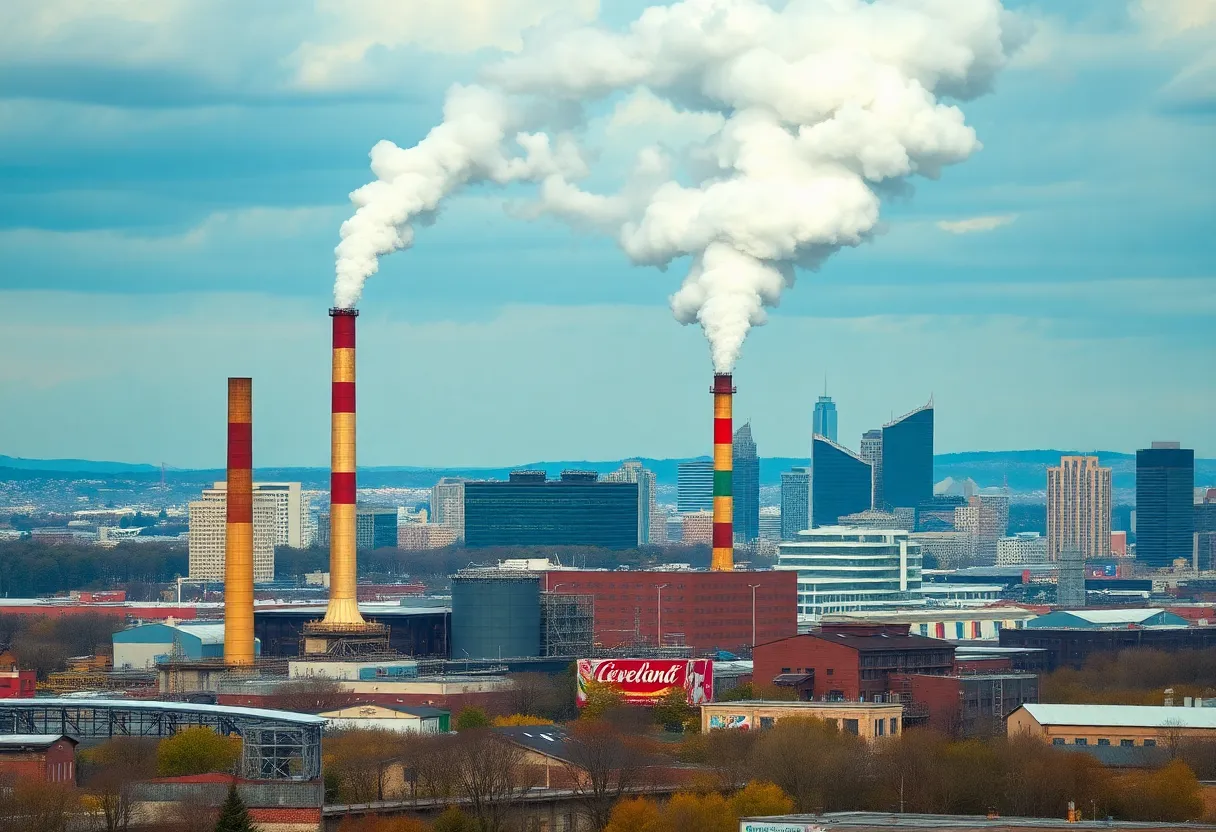News Summary
The Cleveland Works steelmaking facility is the largest source of pollution in Cleveland, emitting approximately 4.2 million metric tons of greenhouse gases annually. This complicates the city’s efforts to achieve net-zero emissions by 2050, posing significant health risks and environmental challenges. Despite calls for cleaner technology and a possible transition to electric arc furnaces, Cleveland-Cliffs has not yet committed to necessary changes. As the demand for low-carbon steel increases, the city faces economic implications if it fails to adapt.
Cleveland’s Steel Plant Challenges City’s Climate Goals
The Cleveland Works steelmaking facility, owned by Cleveland-Cliffs, is a significant contributor to the city’s greenhouse gas emissions, complicating local efforts to achieve net-zero emissions by 2050. The plant, which operates two blast furnaces utilizing coal, emits approximately 4.2 million metric tons of greenhouse gases annually, making it the city’s largest source of pollution.
According to a recent report released by the advocacy group Industrious Labs, the emissions from Cleveland Works have dire health implications, contributing to up to 39 early deaths each year and over 1,700 lost workdays. The facility’s operations are also linked to more than 9,000 asthma cases in the vicinity. Cleveland currently ranks as the fifth-worst U.S. city for asthma prevalence, highlighting the urgent need for effective pollution reduction strategies.
Cleveland’s Climate Action Initiatives
Cleveland’s climate action plan aims for net-zero emissions by 2050, yet the industrial emissions from Cleveland Works present substantial hurdles. The plant’s Blast Furnace #6 is nearing the end of its useful life, raising questions about its replacement with cleaner technology. Advocates argue that adopting direct reduction technology could yield significant benefits, potentially reducing greenhouse gas emissions by over 30% with natural gas and even more with green hydrogen.
However, merely relining the furnace for minor emissions cuts may not be sufficient, especially as increased production rates could negate any reductions achieved. The report from Industrious Labs further recommends transitioning to electric arc furnaces, powered by carbon-free electricity, to accelerate greenhouse gas reductions.
Uncertainty and Economic Implications
Currently, Cleveland-Cliffs has not committed to cutting greenhouse gas emissions or reinvesting in cleaner technologies. Although the company was recognized as a 2023 Goal Achiever in the Department of Energy’s Better Climate Challenge for its nationwide emissions reduction efforts, federal funding for clean energy projects remains uncertain due to recent changes in administration policy. This uncertainty has led to the halt of a project to convert the Middletown Works for green steel production due to a lack of sufficient hydrogen supply, as announced by CEO Lourenco Goncalves.
Moreover, Cuyahoga County shares Cleveland’s ambitions for achieving net-zero emissions by 2050 and is currently updating its climate action plan. The city faces financial challenges in the transition to low-carbon steel, as the cost of producing clean steel is approximately 40% more than traditional methods. Nonetheless, Cleveland Works is already incorporating iron from a direct reduction plant in Toledo, Ohio, and has improved its waste heat electricity generation capacity by about 50 megawatts.
Competitive Necessity for Clean Steel
As the demand for cleaner steel rises, particularly from major automakers, the transition to decarbonizing Cleveland Works is viewed not only as an environmental initiative but also as an economic necessity. Automotive manufacturers are increasingly under pressure to source low-carbon steel, putting Cleveland-Cliffs at risk of falling behind in the market if clean technology is not adopted swiftly.
The Industrious Labs report outlines a potential pathway for Cleveland to establish itself as a leader in clean steel production. However, despite the recommendations and the existing infrastructure, numerous challenges persist before significant advancements in emissions reductions can be realized.
Deeper Dive: News & Info About This Topic
HERE Resources
Cleveland Aims for Net-Zero Emissions by 2050
Construction Industry Faces Challenges with Tariff Volatility and AI
Additional Resources
- Ohio Capital Journal
- Wikipedia: Climate Change in the United States
- Canary Media
- Google Search: Cleveland steel emissions
- Manufacturing Dive
- Encyclopedia Britannica: Greenhouse Gases
- Spectrum News 1
- Google News: Green Steel Production
- Cleveland.com
- Google Scholar: Steel Industry Emissions
- Fuel Cells Works

Author: STAFF HERE CLEVELAND WRITER
The CLEVELAND STAFF WRITER represents the seasoned team at HERECleveland.com, your premier source for actionable local news and information in Cleveland, Cuyahoga County, and beyond, delivering "news you can use" with in-depth coverage of product reviews for personal and business needs, local business directories, politics, real estate trends, neighborhood insights, and state news impacting the region—backed by years of expert reporting and robust community input, including local press releases and business updates, while providing top reporting on high-profile events like the Rock and Roll Hall of Fame inductions, Cleveland International Film Festival, and holiday parades, alongside key organizations such as the Cleveland Clinic, Cleveland Orchestra, and Great Lakes Science Center, plus leading businesses in manufacturing and healthcare like Sherwin-Williams and University Hospitals, and as part of the broader HERE network including HEREDayton.com, offering comprehensive, credible insights into Ohio's vibrant landscape. HERE Cleveland HERE Dayton





